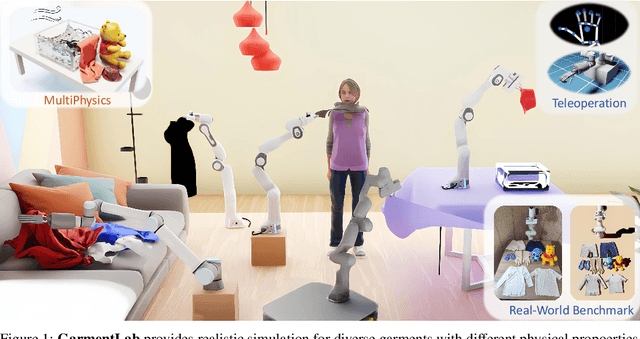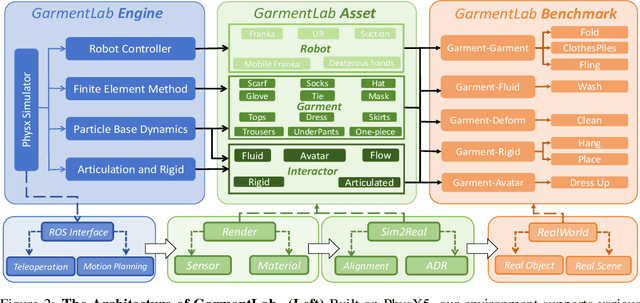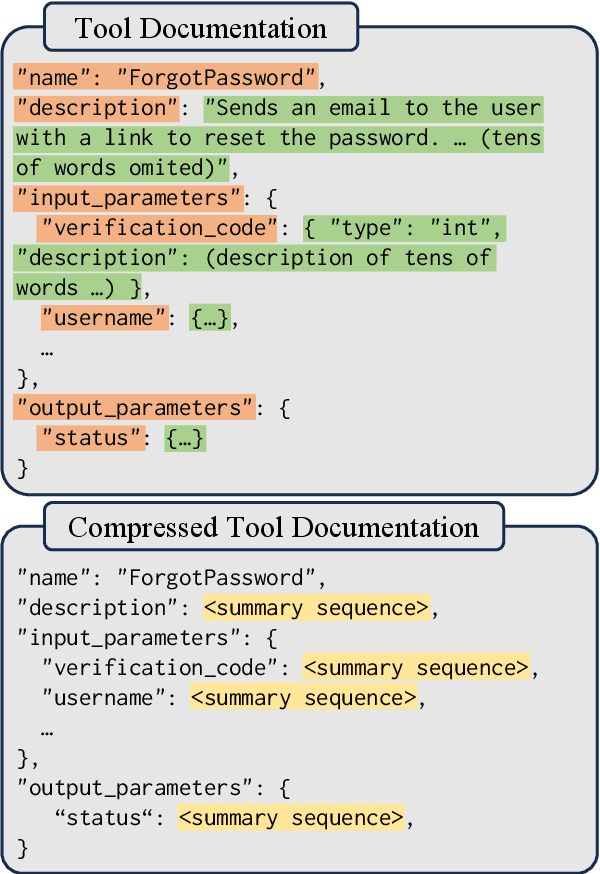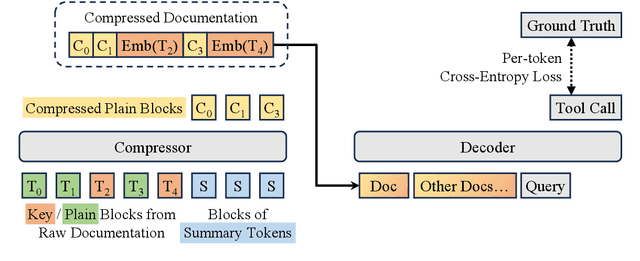Yitong Li
MedBridge: Bridging Foundation Vision-Language Models to Medical Image Diagnosis
May 27, 2025Abstract:Recent vision-language foundation models deliver state-of-the-art results on natural image classification but falter on medical images due to pronounced domain shifts. At the same time, training a medical foundation model requires substantial resources, including extensive annotated data and high computational capacity. To bridge this gap with minimal overhead, we introduce MedBridge, a lightweight multimodal adaptation framework that re-purposes pretrained VLMs for accurate medical image diagnosis. MedBridge comprises three key components. First, a Focal Sampling module that extracts high-resolution local regions to capture subtle pathological features and compensate for the limited input resolution of general-purpose VLMs. Second, a Query Encoder (QEncoder) injects a small set of learnable queries that attend to the frozen feature maps of VLM, aligning them with medical semantics without retraining the entire backbone. Third, a Mixture of Experts mechanism, driven by learnable queries, harnesses the complementary strength of diverse VLMs to maximize diagnostic performance. We evaluate MedBridge on five medical imaging benchmarks across three key adaptation tasks, demonstrating its superior performance in both cross-domain and in-domain adaptation settings, even under varying levels of training data availability. Notably, MedBridge achieved over 6-15% improvement in AUC compared to state-of-the-art VLM adaptation methods in multi-label thoracic disease diagnosis, underscoring its effectiveness in leveraging foundation models for accurate and data-efficient medical diagnosis. Our code is available at https://github.com/ai-med/MedBridge.
AmorLIP: Efficient Language-Image Pretraining via Amortization
May 25, 2025Abstract:Contrastive Language-Image Pretraining (CLIP) has demonstrated strong zero-shot performance across diverse downstream text-image tasks. Existing CLIP methods typically optimize a contrastive objective using negative samples drawn from each minibatch. To achieve robust representation learning, these methods require extremely large batch sizes and escalate computational demands to hundreds or even thousands of GPUs. Prior approaches to mitigate this issue often compromise downstream performance, prolong training duration, or face scalability challenges with very large datasets. To overcome these limitations, we propose AmorLIP, an efficient CLIP pretraining framework that amortizes expensive computations involved in contrastive learning through lightweight neural networks, which substantially improves training efficiency and performance. Leveraging insights from a spectral factorization of energy-based models, we introduce novel amortization objectives along with practical techniques to improve training stability. Extensive experiments across 38 downstream tasks demonstrate the superior zero-shot classification and retrieval capabilities of AmorLIP, consistently outperforming standard CLIP baselines with substantial relative improvements of up to 12.24%.
Not All Models Suit Expert Offloading: On Local Routing Consistency of Mixture-of-Expert Models
May 21, 2025Abstract:Mixture-of-Experts (MoE) enables efficient scaling of large language models (LLMs) with sparsely activated experts during inference. To effectively deploy large MoE models on memory-constrained devices, many systems introduce *expert offloading* that caches a subset of experts in fast memory, leaving others on slow memory to run on CPU or load on demand. While some research has exploited the locality of expert activations, where consecutive tokens activate similar experts, the degree of this **local routing consistency** varies across models and remains understudied. In this paper, we propose two metrics to measure local routing consistency of MoE models: (1) **Segment Routing Best Performance (SRP)**, which evaluates how well a fixed group of experts can cover the needs of a segment of tokens, and (2) **Segment Cache Best Hit Rate (SCH)**, which measures the optimal segment-level cache hit rate under a given cache size limit. We analyzed 20 MoE LLMs with diverse sizes and architectures and found that models that apply MoE on every layer and do not use shared experts exhibit the highest local routing consistency. We further showed that domain-specialized experts contribute more to routing consistency than vocabulary-specialized ones, and that most models can balance between cache effectiveness and efficiency with cache sizes approximately 2x the active experts. These findings pave the way for memory-efficient MoE design and deployment without compromising inference speed. We publish the code for replicating experiments at https://github.com/ljcleo/moe-lrc .
Process Reward Modeling with Entropy-Driven Uncertainty
Mar 28, 2025Abstract:This paper presents the Entropy-Driven Unified Process Reward Model (EDU-PRM), a novel framework that approximates state-of-the-art performance in process supervision while drastically reducing training costs. EDU-PRM introduces an entropy-guided dynamic step partitioning mechanism, using logit distribution entropy to pinpoint high-uncertainty regions during token generation dynamically. This self-assessment capability enables precise step-level feedback without manual fine-grained annotation, addressing a critical challenge in process supervision. Experiments on the Qwen2.5-72B model with only 7,500 EDU-PRM-generated training queries demonstrate accuracy closely approximating the full Qwen2.5-72B-PRM (71.1% vs. 71.6%), achieving a 98% reduction in query cost compared to prior methods. This work establishes EDU-PRM as an efficient approach for scalable process reward model training.
Mixture of Lookup Experts
Mar 20, 2025Abstract:Mixture-of-Experts (MoE) activates only a subset of experts during inference, allowing the model to maintain low inference FLOPs and latency even as the parameter count scales up. However, since MoE dynamically selects the experts, all the experts need to be loaded into VRAM. Their large parameter size still limits deployment, and offloading, which load experts into VRAM only when needed, significantly increase inference latency. To address this, we propose Mixture of Lookup Experts (MoLE), a new MoE architecture that is efficient in both communication and VRAM usage. In MoLE, the experts are Feed-Forward Networks (FFNs) during training, taking the output of the embedding layer as input. Before inference, these experts can be re-parameterized as lookup tables (LUTs) that retrieves expert outputs based on input ids, and offloaded to storage devices. Therefore, we do not need to perform expert computations during inference. Instead, we directly retrieve the expert's computation results based on input ids and load them into VRAM, and thus the resulting communication overhead is negligible. Experiments show that, with the same FLOPs and VRAM usage, MoLE achieves inference speeds comparable to dense models and significantly faster than MoE with experts offloading, while maintaining performance on par with MoE.
3D Shape-to-Image Brownian Bridge Diffusion for Brain MRI Synthesis from Cortical Surfaces
Feb 18, 2025Abstract:Despite recent advances in medical image generation, existing methods struggle to produce anatomically plausible 3D structures. In synthetic brain magnetic resonance images (MRIs), characteristic fissures are often missing, and reconstructed cortical surfaces appear scattered rather than densely convoluted. To address this issue, we introduce Cor2Vox, the first diffusion model-based method that translates continuous cortical shape priors to synthetic brain MRIs. To achieve this, we leverage a Brownian bridge process which allows for direct structured mapping between shape contours and medical images. Specifically, we adapt the concept of the Brownian bridge diffusion model to 3D and extend it to embrace various complementary shape representations. Our experiments demonstrate significant improvements in the geometric accuracy of reconstructed structures compared to previous voxel-based approaches. Moreover, Cor2Vox excels in image quality and diversity, yielding high variation in non-target structures like the skull. Finally, we highlight the capability of our approach to simulate cortical atrophy at the sub-voxel level. Our code is available at https://github.com/ai-med/Cor2Vox.
TimeFlow: Longitudinal Brain Image Registration and Aging Progression Analysis
Jan 15, 2025Abstract:Predicting future brain states is crucial for understanding healthy aging and neurodegenerative diseases. Longitudinal brain MRI registration, a cornerstone for such analyses, has long been limited by its inability to forecast future developments, reliance on extensive, dense longitudinal data, and the need to balance registration accuracy with temporal smoothness. In this work, we present \emph{TimeFlow}, a novel framework for longitudinal brain MRI registration that overcomes all these challenges. Leveraging a U-Net architecture with temporal conditioning inspired by diffusion models, TimeFlow enables accurate longitudinal registration and facilitates prospective analyses through future image prediction. Unlike traditional methods that depend on explicit smoothness regularizers and dense sequential data, TimeFlow achieves temporal consistency and continuity without these constraints. Experimental results highlight its superior performance in both future timepoint prediction and registration accuracy compared to state-of-the-art methods. Additionally, TimeFlow supports novel biological brain aging analyses, effectively differentiating neurodegenerative conditions from healthy aging. It eliminates the need for segmentation, thereby avoiding the challenges of non-trivial annotation and inconsistent segmentation errors. TimeFlow paves the way for accurate, data-efficient, and annotation-free prospective analyses of brain aging and chronic diseases.
GarmentLab: A Unified Simulation and Benchmark for Garment Manipulation
Nov 02, 2024



Abstract:Manipulating garments and fabrics has long been a critical endeavor in the development of home-assistant robots. However, due to complex dynamics and topological structures, garment manipulations pose significant challenges. Recent successes in reinforcement learning and vision-based methods offer promising avenues for learning garment manipulation. Nevertheless, these approaches are severely constrained by current benchmarks, which offer limited diversity of tasks and unrealistic simulation behavior. Therefore, we present GarmentLab, a content-rich benchmark and realistic simulation designed for deformable object and garment manipulation. Our benchmark encompasses a diverse range of garment types, robotic systems and manipulators. The abundant tasks in the benchmark further explores of the interactions between garments, deformable objects, rigid bodies, fluids, and human body. Moreover, by incorporating multiple simulation methods such as FEM and PBD, along with our proposed sim-to-real algorithms and real-world benchmark, we aim to significantly narrow the sim-to-real gap. We evaluate state-of-the-art vision methods, reinforcement learning, and imitation learning approaches on these tasks, highlighting the challenges faced by current algorithms, notably their limited generalization capabilities. Our proposed open-source environments and comprehensive analysis show promising boost to future research in garment manipulation by unlocking the full potential of these methods. We guarantee that we will open-source our code as soon as possible. You can watch the videos in supplementary files to learn more about the details of our work. Our project page is available at: https://garmentlab.github.io/
DiaMond: Dementia Diagnosis with Multi-Modal Vision Transformers Using MRI and PET
Oct 30, 2024Abstract:Diagnosing dementia, particularly for Alzheimer's Disease (AD) and frontotemporal dementia (FTD), is complex due to overlapping symptoms. While magnetic resonance imaging (MRI) and positron emission tomography (PET) data are critical for the diagnosis, integrating these modalities in deep learning faces challenges, often resulting in suboptimal performance compared to using single modalities. Moreover, the potential of multi-modal approaches in differential diagnosis, which holds significant clinical importance, remains largely unexplored. We propose a novel framework, DiaMond, to address these issues with vision Transformers to effectively integrate MRI and PET. DiaMond is equipped with self-attention and a novel bi-attention mechanism that synergistically combine MRI and PET, alongside a multi-modal normalization to reduce redundant dependency, thereby boosting the performance. DiaMond significantly outperforms existing multi-modal methods across various datasets, achieving a balanced accuracy of 92.4% in AD diagnosis, 65.2% for AD-MCI-CN classification, and 76.5% in differential diagnosis of AD and FTD. We also validated the robustness of DiaMond in a comprehensive ablation study. The code is available at https://github.com/ai-med/DiaMond.
Concise and Precise Context Compression for Tool-Using Language Models
Jul 02, 2024



Abstract:Through reading the documentation in the context, tool-using language models can dynamically extend their capability using external tools. The cost is that we have to input lengthy documentation every time the model needs to use the tool, occupying the input window as well as slowing down the decoding process. Given the progress in general-purpose compression, soft context compression is a suitable approach to alleviate the problem. However, when compressing tool documentation, existing methods suffer from the weaknesses of key information loss (specifically, tool/parameter name errors) and difficulty in adjusting the length of compressed sequences based on documentation lengths. To address these problems, we propose two strategies for compressing tool documentation into concise and precise summary sequences for tool-using language models. 1) Selective compression strategy mitigates key information loss by deliberately retaining key information as raw text tokens. 2) Block compression strategy involves dividing tool documentation into short chunks and then employing a fixed-length compression model to achieve variable-length compression. This strategy facilitates the flexible adjustment of the compression ratio. Results on API-Bank and APIBench show that our approach reaches a performance comparable to the upper-bound baseline under up to 16x compression ratio.
 Add to Chrome
Add to Chrome Add to Firefox
Add to Firefox Add to Edge
Add to Edge